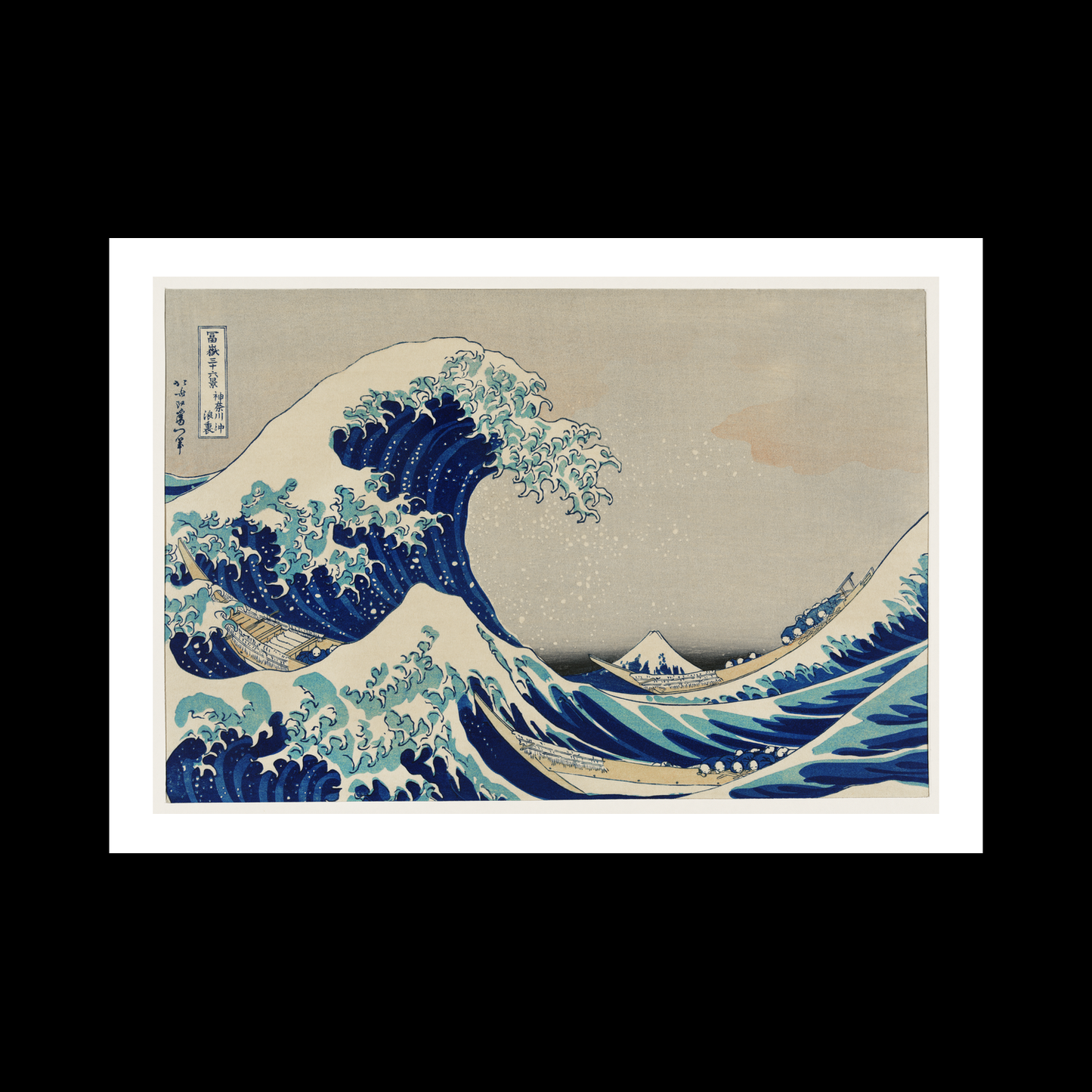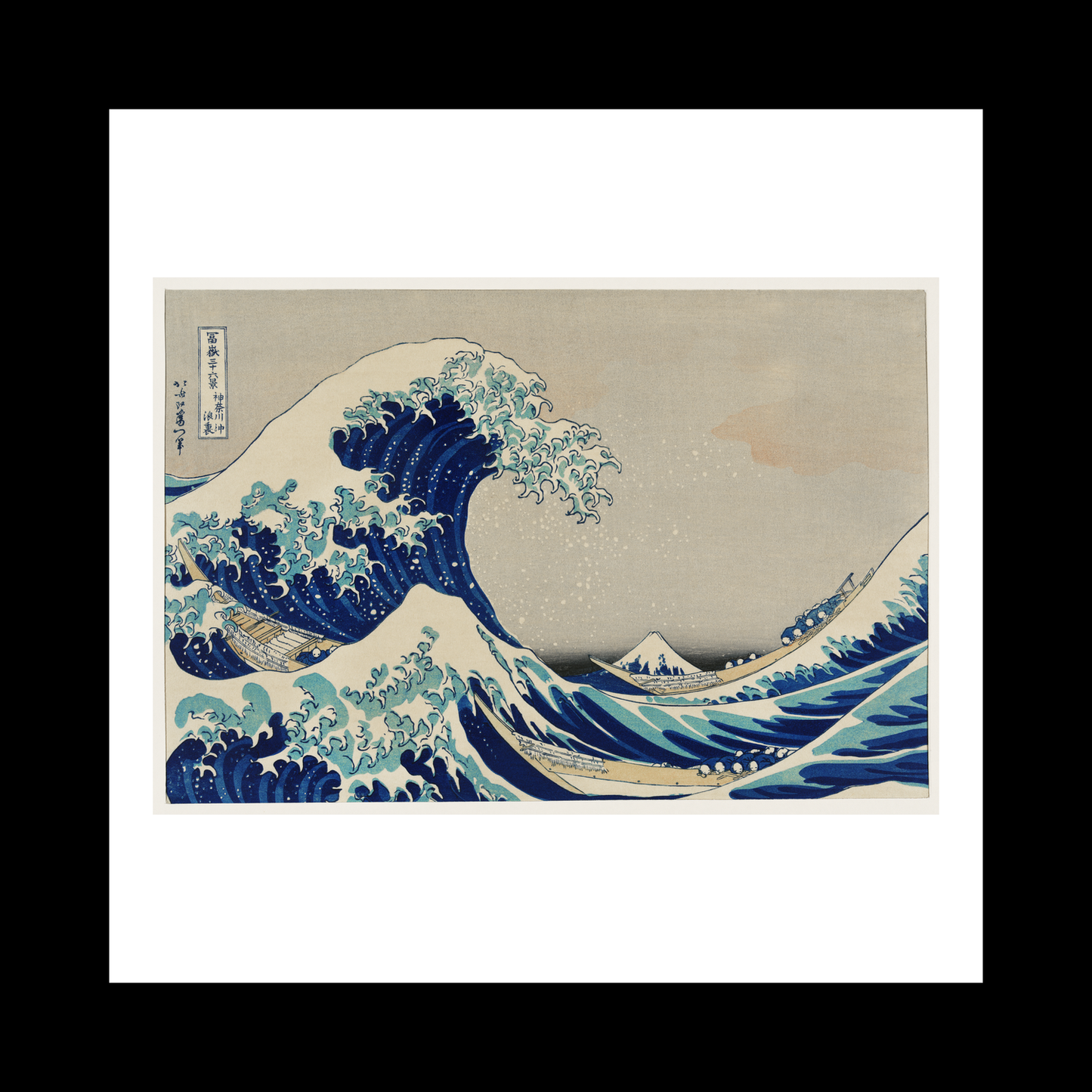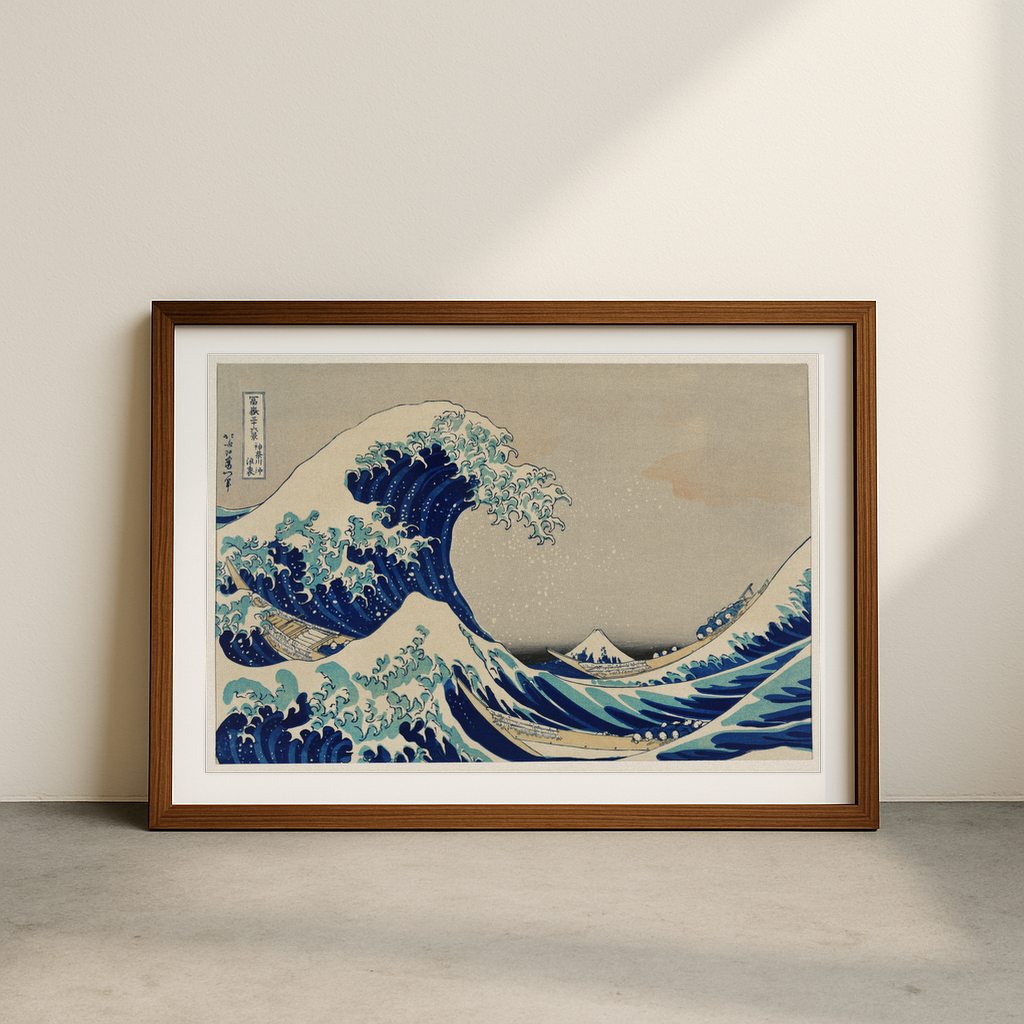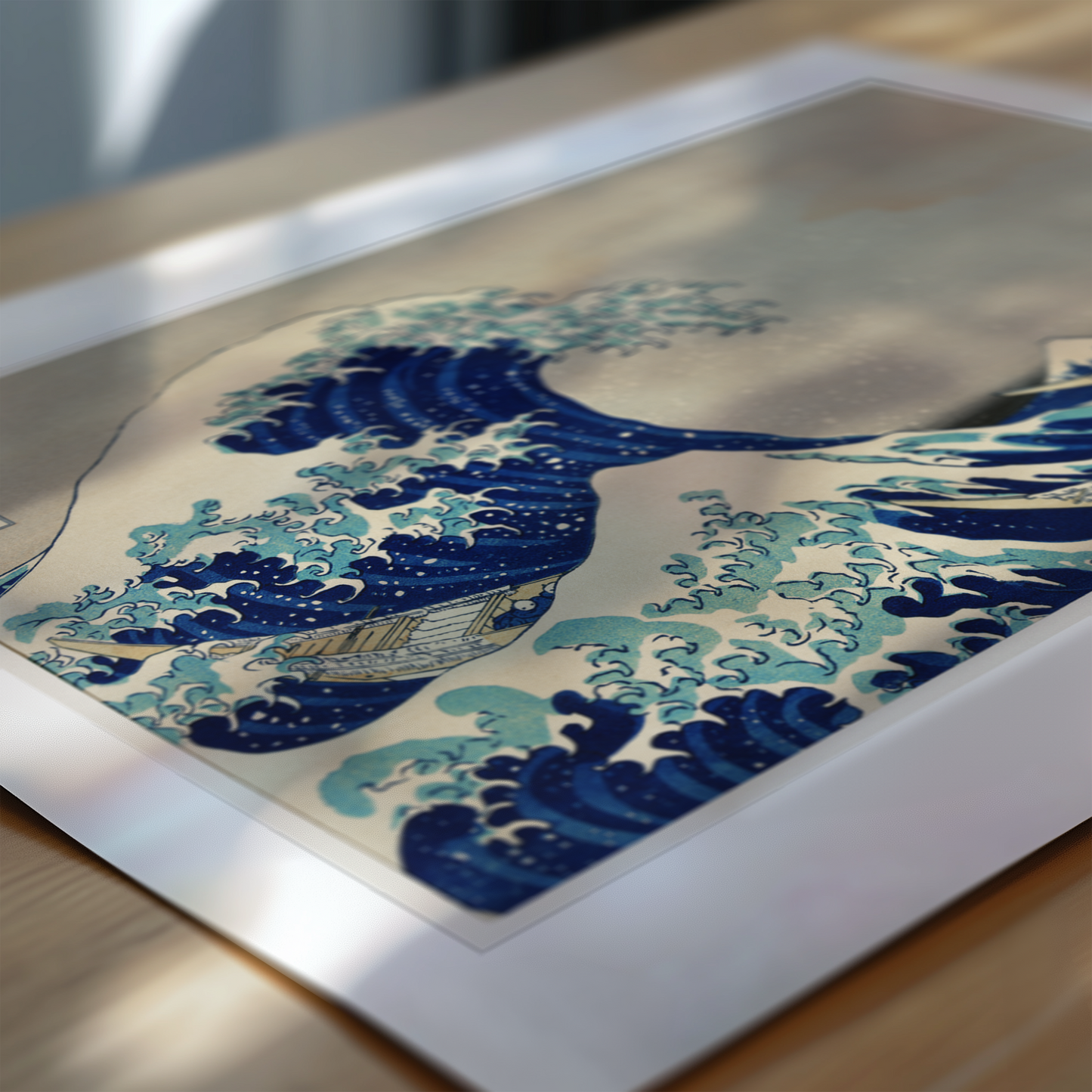1
/
of
6
Kanazawa Oki Nami Ura
Kanazawa Oki Nami Ura
Regular price
£12.45 GBP
Regular price
Sale price
£12.45 GBP
Taxes included.
Quantity
Couldn't load pickup availability
"Kanazawa Oki Nami Ura" (Behind the Great Wave at Kanazawa) showcases Hokusai's extraordinary ability to capture nature's raw power through the distinctive Ukiyo-e woodblock printing technique. The composition draws viewers into a dramatic scene where enormous waves threaten small fishing boats, while Mount Fuji stands serenely in the background, appearing almost diminutive against the towering waters. The artist's masterful use of Prussian blue pigment, a relatively new material in Japanese art at the time, creates striking contrasts and depth in the turbulent waters.
Created during Japan's Edo period, this piece reflects Hokusai's fascination with the relationship between humans and nature. At nearly 70 years old when he created this work, Hokusai was at the height of his artistic powers, having spent decades perfecting his craft. The print belongs to his celebrated series "Thirty-six Views of Mount Fuji," which revolutionised Japanese landscape art and later influenced European Impressionists.
The technical precision in this work is remarkable, particularly in the detailed rendering of the wave's foam fingers and the subtle gradations of colour achieved through multiple woodblock impressions. Hokusai's innovative composition techniques, such as using the wave to frame Mount Fuji and creating dynamic diagonal lines to suggest movement, demonstrate his sophisticated understanding of visual storytelling. This piece embodies the Japanese concept of 'ukiyo' - the floating world - while simultaneously capturing a moment of intense drama and sublime natural power.
The work holds particular significance as it represents the dangerous lives of Japanese fishermen, while also symbolising Japan's complex relationship with the sea. Hokusai's ability to balance beauty with danger, and traditional Japanese artistic elements with modern techniques, created an enduring influence on both Eastern and Western art traditions.
View full details
Created during Japan's Edo period, this piece reflects Hokusai's fascination with the relationship between humans and nature. At nearly 70 years old when he created this work, Hokusai was at the height of his artistic powers, having spent decades perfecting his craft. The print belongs to his celebrated series "Thirty-six Views of Mount Fuji," which revolutionised Japanese landscape art and later influenced European Impressionists.
The technical precision in this work is remarkable, particularly in the detailed rendering of the wave's foam fingers and the subtle gradations of colour achieved through multiple woodblock impressions. Hokusai's innovative composition techniques, such as using the wave to frame Mount Fuji and creating dynamic diagonal lines to suggest movement, demonstrate his sophisticated understanding of visual storytelling. This piece embodies the Japanese concept of 'ukiyo' - the floating world - while simultaneously capturing a moment of intense drama and sublime natural power.
The work holds particular significance as it represents the dangerous lives of Japanese fishermen, while also symbolising Japan's complex relationship with the sea. Hokusai's ability to balance beauty with danger, and traditional Japanese artistic elements with modern techniques, created an enduring influence on both Eastern and Western art traditions.











